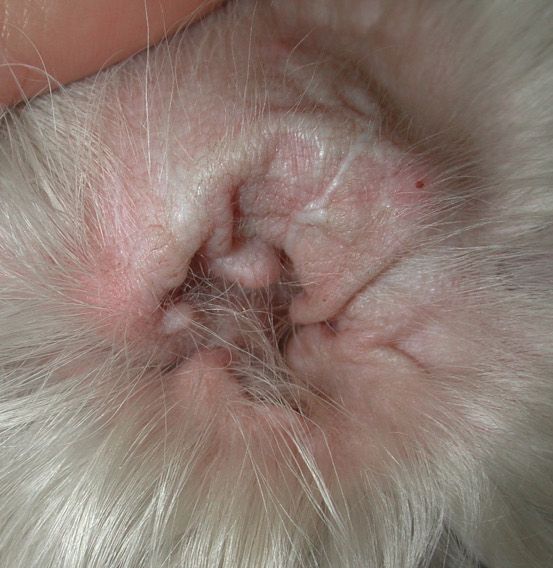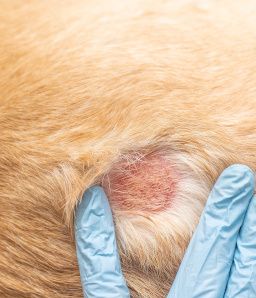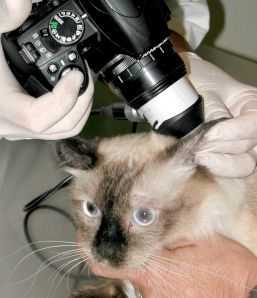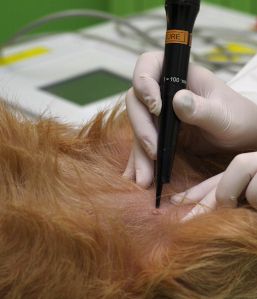For the clients
Ear disease
Chronic/recurrent otitis is one of the most challenging conditions to control and is often a source of frustration for owners. It is important to identify the primary causes of otitis early to treat it effectively.
The Studio Dermatologico Veterinario is equipped with video otoscope that provide amazing clarity to assess the condition of the ear canal and eardrum. Video Otoscopy allows a correct diagnosis and the best treatment of ear diseases

Animal species predisposed to otitis
Dogs are far more likely to develop otitis than cats. The reason is probably to be found in the different anatomical features between the two species, in particular the greater length of the ear canals in dogs and particular conformations of the pinna in some dog breeds e.g., the pendulous pinnae of the Cocker or the stenotic canals of the Shar Pei.
Main causes of otitis in dogs and cats
By far the most common primary cause of otitis in dogs is allergic diseases (atopic dermatitis and food allergy) followed by parasitic infestation by Otodectes cynotis in individuals who do not take adequate antiparasitic prophylaxis, particularly in stray dogs and cats.
Other less frequent causes in dogs are foreign bodies (grass aristae), hypothyroidism, and glandular disorders. If the primary cause is not quickly controlled or resolved bacteria and yeasts (Malassezia spp.) residing in the ear canals proliferate causing infection and perpetuating the inflammatory process.
The cat is a much less susceptible species to otitis than the dog. Also in the cat, allergies and Otodectes cynotis infestation are the most common causes followed by inflammatory polyps especially in very young individuals.
Video: Foreign body extraction from ear canal
Frequently asked questions
Otitis may cause itching or pain.
If the dog or cat is itchy, it manifests it by shaking its head or scratching the skin near the ear pinnae causing excoriations.
If the dog has ear pain it may keep its head tilted to one side and may overreact aggressively when stroking its head near the ear.
If otitis has set in suddenly and in only one ear, it is important to have the dog checked by the veterinarian as soon as possible to see if a foreign body (e.g., grass awn) has entered in the ear canal.
Predisposing factors for otitis are associated with species characteristics, race, and lifestyle habits. In particular, otitis externa is most frequently observed in:
- Dogs with pendulous ears (e.g., Cockers, Basset Hounds)
- Subjects with hair in the ear canals such as Poodles and Lagotto
- Dogs that hunt and are more prone to foreign bodies entering the ducts (grass awn)
- Dogs with high density of ceruminous glands in the ear ducts such as Cocker
- Dogs with hypothyroidism
- Dogs and cats with both environmental and food allergic dermatitis
Video-otoscopic examination improves and optimizes visualization of the ear canal and eardrum compared with classic otoscopic examination. This technique is recommended in cases of:
- recurrent/chronic otitis that have not been resolved by usual therapies and which likewise would end up being destined for surgical therapy.
- When foreign bodies or neoformations are suspected.
It allows for deeper and more thorough cleaning of the duct and tympanic bulla, collection of exudate samples for bacteriological examination, and possible biopsy sampling.




